Each year, the Sioux County Historical Society Museum in Harrison, Nebraska hosts a historical tour around a portion of the county. This year’s trip took us around the eastern part of the county with highlights about the early-day settlers of Sioux County, family plots, schools, the Agate to Andrews Mail Route, and stops in Marsland and Belmont.
The county is 2,067 sq mi (5,354 km2). In 2010, its population was 1,311. Though the population is small, there is a lot of history in the county, so much so that our tour took us through the eastern part of the county and slightly into Dawes Counties. Like many parts of western Nebraska, the railroad played a large part in its history.
When the Fremont, Elkhorn, & Missouri Valley Railroad was constructed across northern Nebraska, a contractor’s camp was established on the treeless prairie in Sioux County. This became the location of Harrison. Sowbelly Creek, about three miles from camp, supplied the water for work teams and human use.
When the rails reached camp in June, 1886, there were no settlers within 10 or 12 miles. By fall immigrant cars containing the possessions of settlers were arriving at “the Summit,” given that name because the railroad traversed a long steep grade to the crest of the hill before stopping. The elevation, 4878 feet above sea level, makes this the highest town in the state.
Paul and I arrived in Harrison at 7:45 a.m., for cinnamon rolls, coffee and water along with a quick tour of part of the museum before heading out in a yellow school bus to learn about the history of the area.
Naturally, I saw something else. I can’t seem to help it. This is my “alternative” tour of Sioux County.
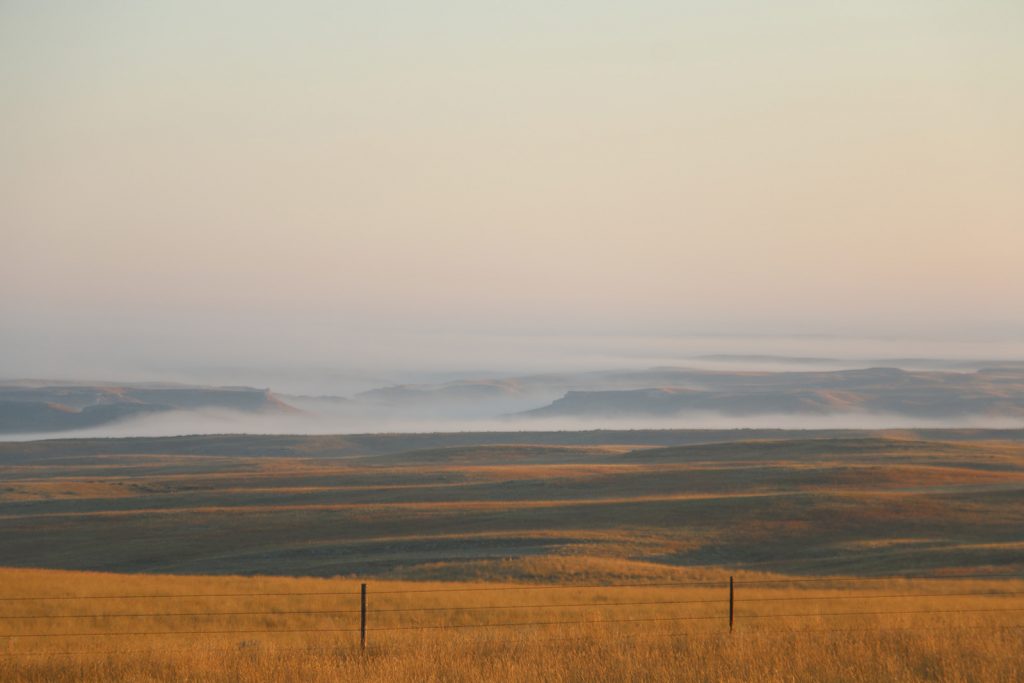
As we drove along Highway 29 north, the fog deepened or lifted depending on where we were. When the Sun began to rise, its yellow hues attempted to pierce the grey in the east. It was unsuccessful for quite some time.
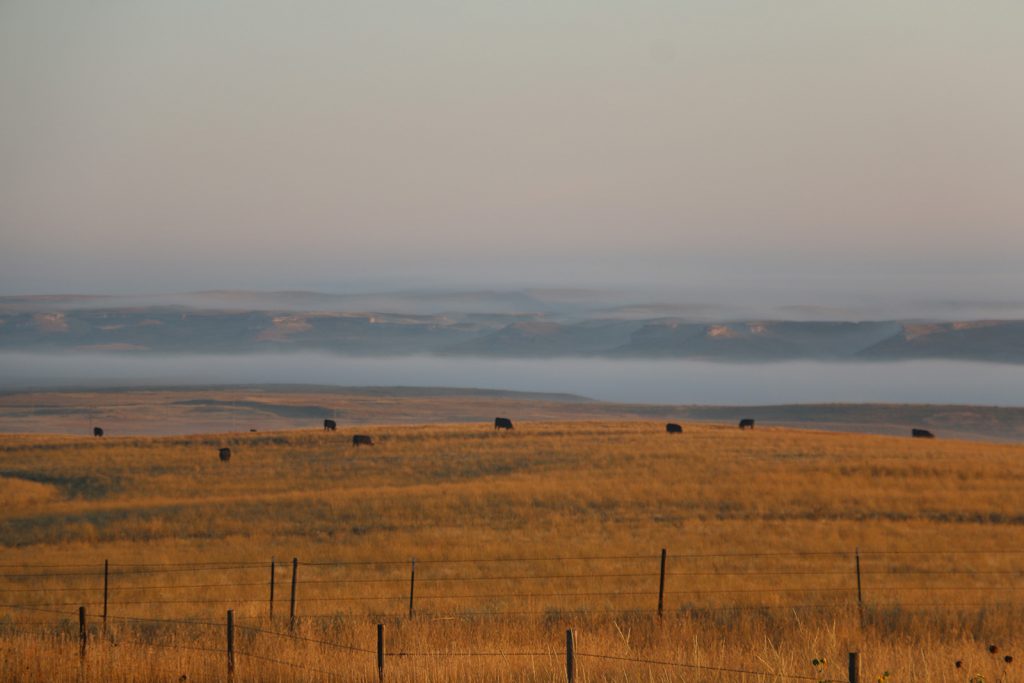
The wind rustled through the fields. The cows were already grazing as the sun rose and kissed the buttes with light before dipping behind the fog once again.
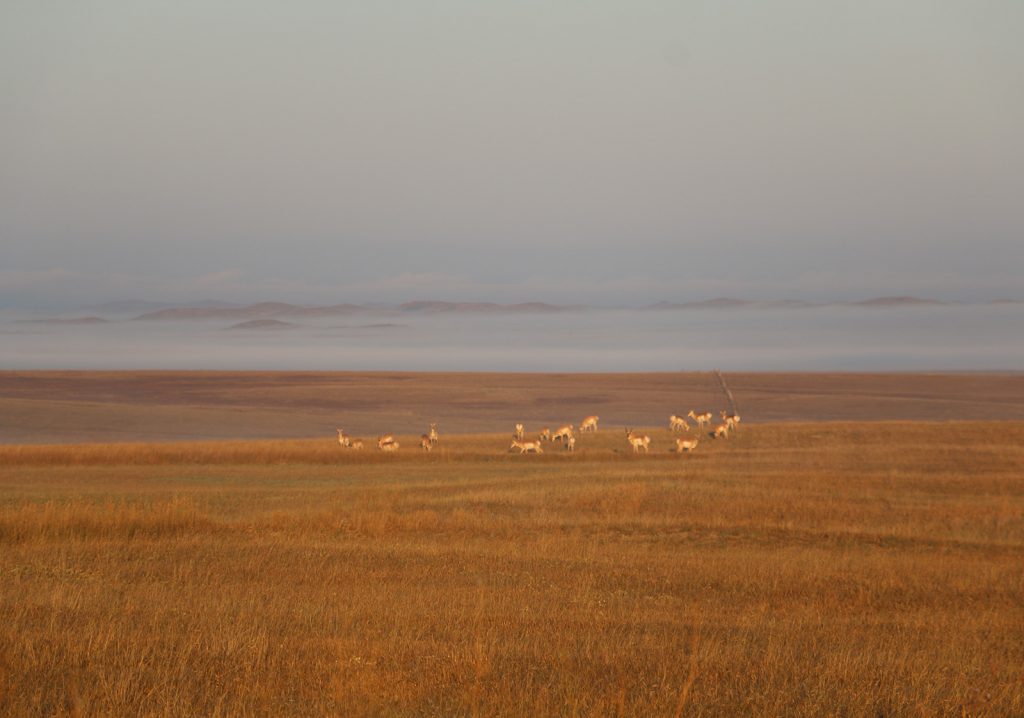
Looking west toward Wyoming, a herd of pronghorn blend in with nature in the early morning along Highway 29. It’s breakfast time amidst the fog and gently blowing wind. It’s the only time during the day that I regretted not bringing my 300mm lens with me.
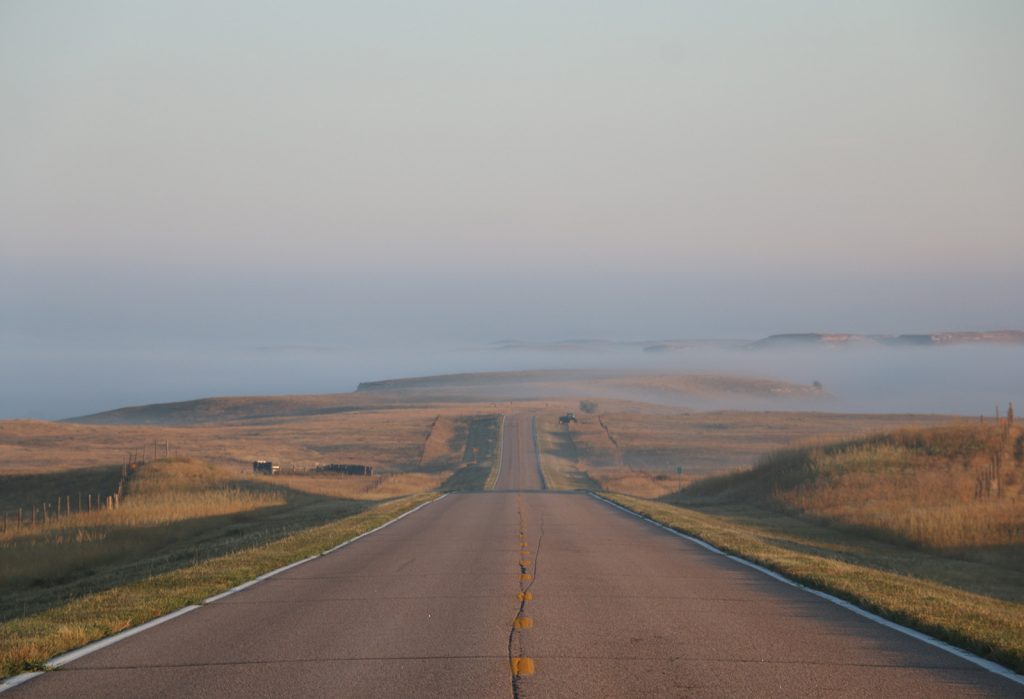
Harrison, Nebraska is much farther north on Highway 29, but first I must traverse the misty grey fog that lurks in front of me. As I traveled along the road, there were times where it would envelope me. During those tense miles, I was thankful no animals ran across the road in front of me because I would have never seen them.
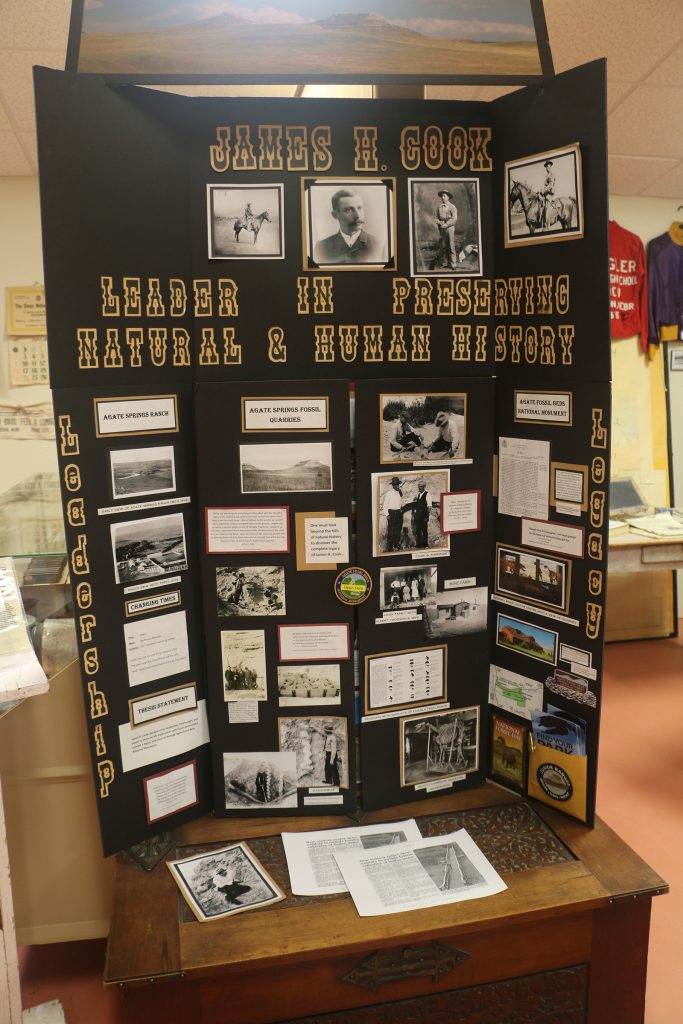
Upon reaching the Sioux County Museum in Harrison, Paul and I checked in for the historical tour and took a quick tour of the museum. When I saw this, I thought, “Hey, I remember doing a story on the Skavdahls when this was on display at Agate Fossil Beds.” I went over for a closer look.
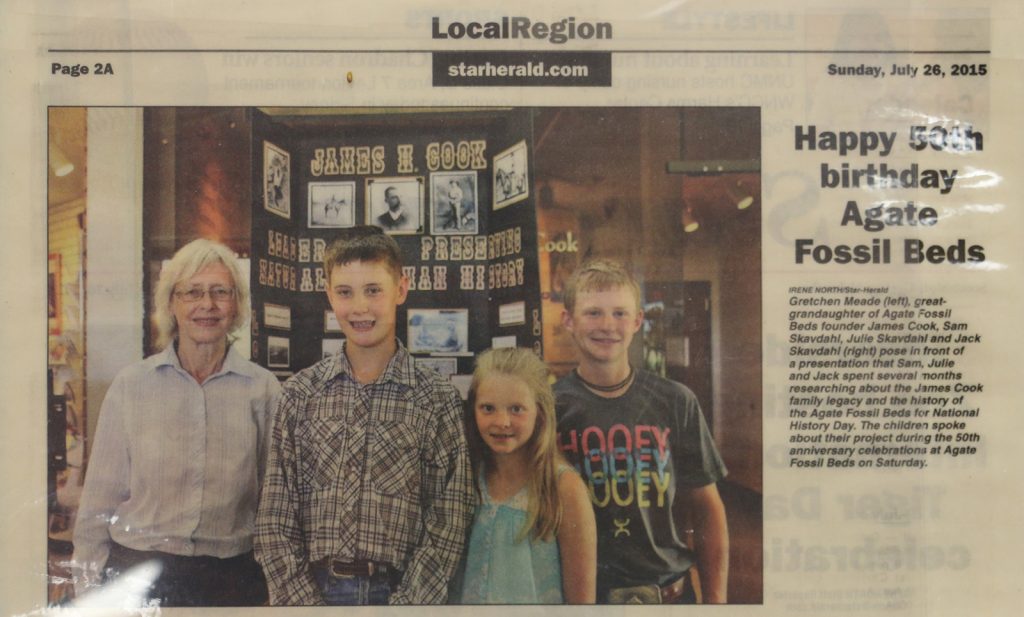
Next to the Skavdahl’s display is this piece of the Star-Herald. I am now officially a museum artifact.
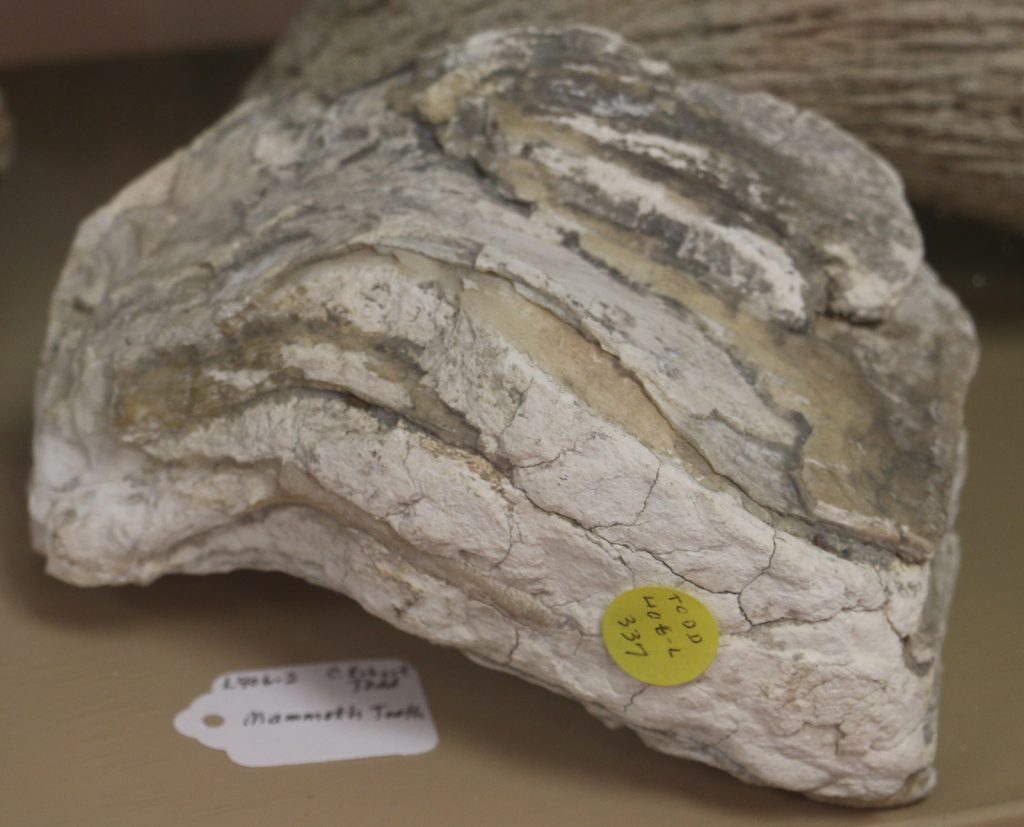
The Sioux County Museum also boasts a display case full of fossils found in the county. Among them is this mammoth tooth.
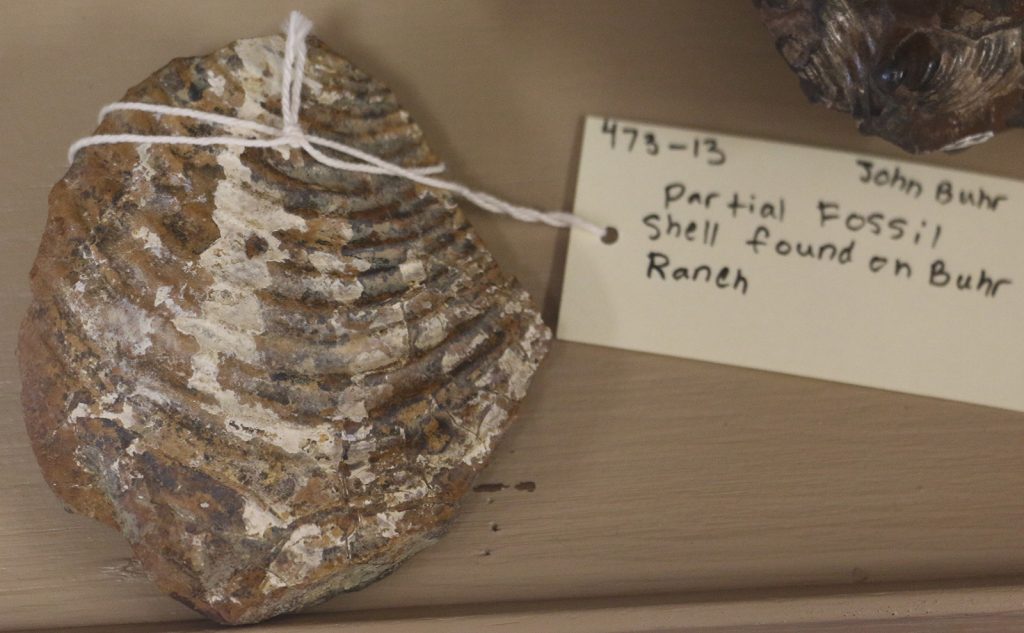
If you don’t accept the scientific evidence, then you will probably never accept that what is now Sioux County was once under water.
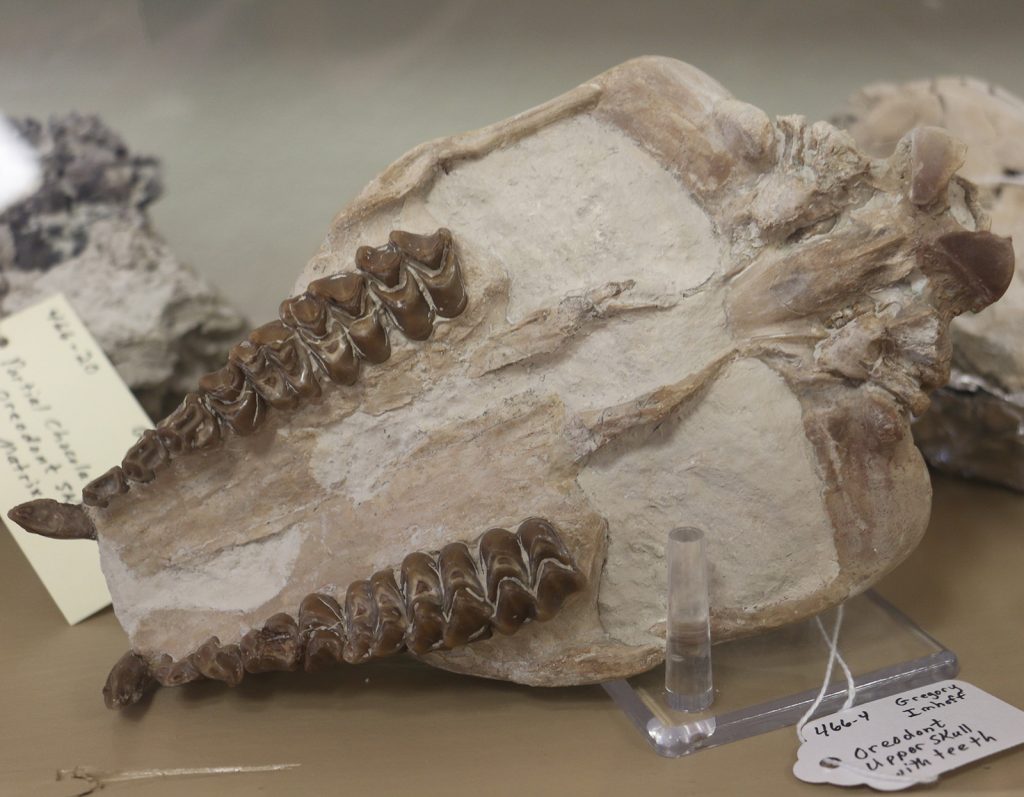
An oreodont’s upper skull with teeth rests in the Sioux County Historical Museum in Harrison, Nebraska. Also known as merycoidodontoidea, oreodonts are an extinct superfamily of prehistoric cud-chewing artiodactyls with short faces and fang-like canine teeth. Traditionally, they are known as “hog-like,” but recent evidence shows they may be more closely related to camels.
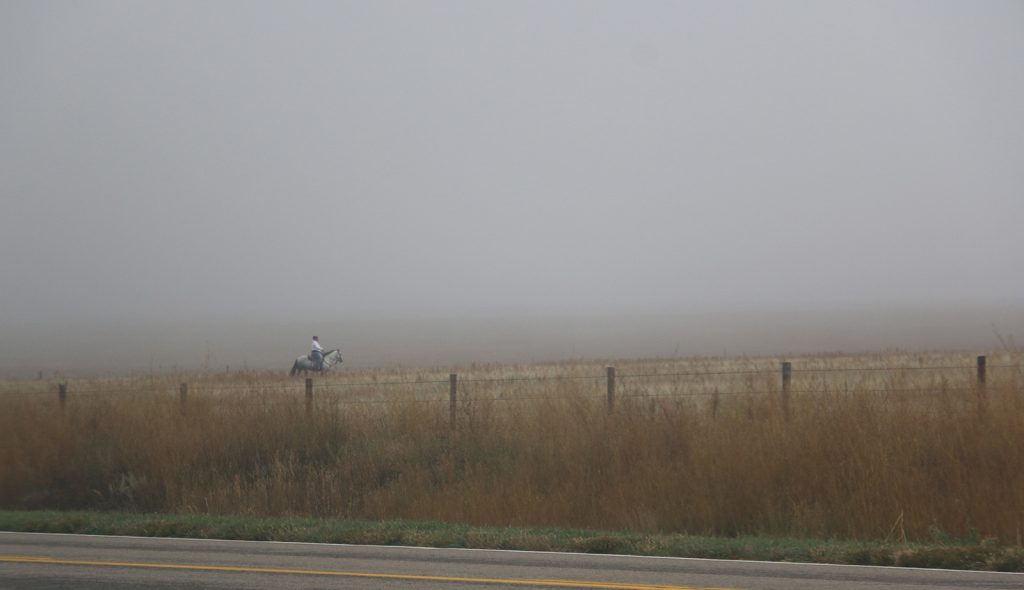
Let’s start our historical tour of Sioux County. Oh, look at that, we are at the historical marker for the Fort Laramie – Fort Robinson Trail and I am distracted by someone riding a horse in the dense fog.
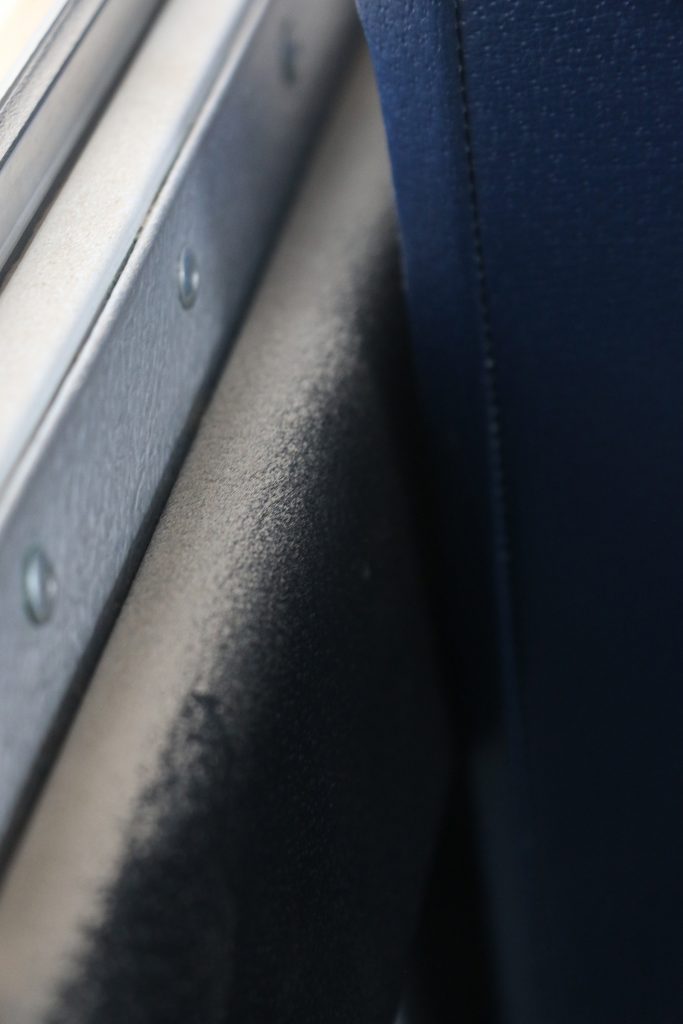
The seals on the school bus windows were not perfect. My seat filled with dust as we traveled along the bumpy, dirt roads in Sioux County. Dust rained down on my blue jeans and camera bag, but that did not deter me or spoil my day.
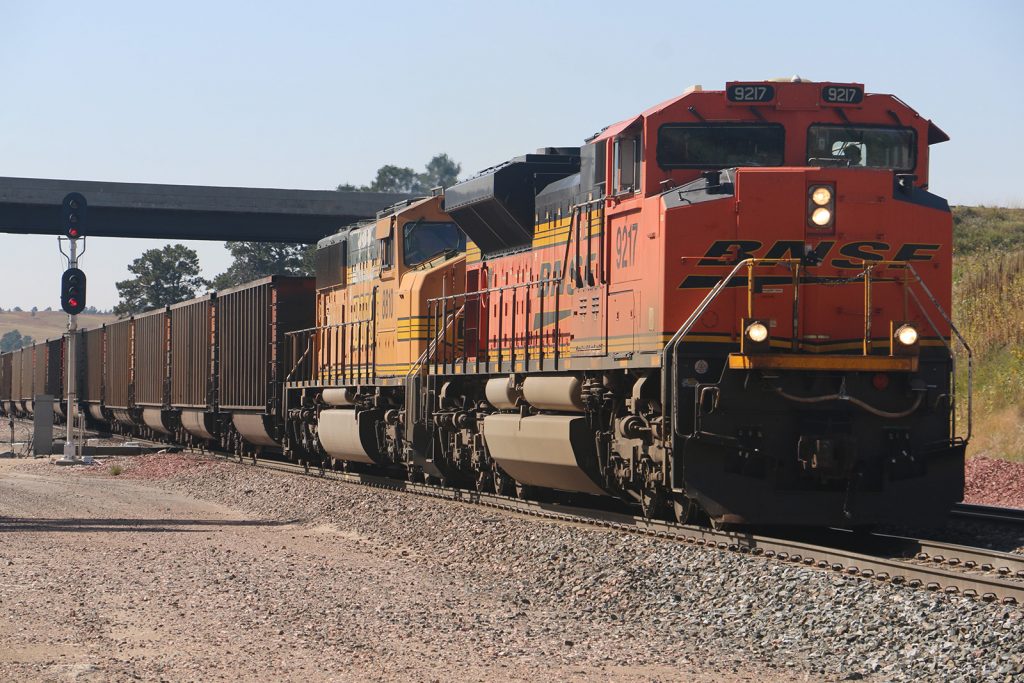
As part of the historical tour, we traveled to see the Belmont Tunnel, Nebraska’s only train tunnel. It was replaced by new tracks next to the tunnel, but the tunnel remains. During our tour, we received several handouts about the history of the area. I was pleased to learn that my article about the history of the tunnel was the handout.
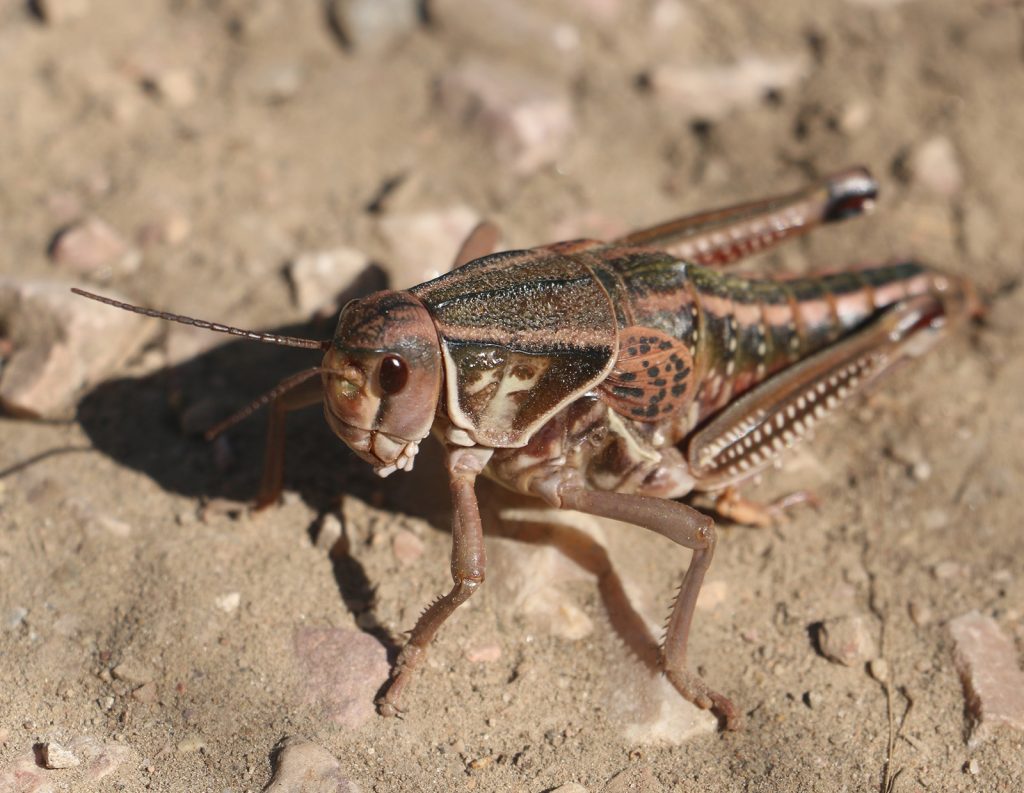
As I walked down the path that leads to the Belmont Tunnel, I stopped dead in my tracks. In front of me was a Brachystola magna, or Plains Lubber, grasshopper. I watched and photographed the grasshopper for about seven minutes. It was watching me and must have known I would not hurt it. I looked at its features and how large it was. As it sat there, almost posing, I noticed its foot grasp and ungrasp a piece of rock as if it was deciding whether it was going to move on or not.
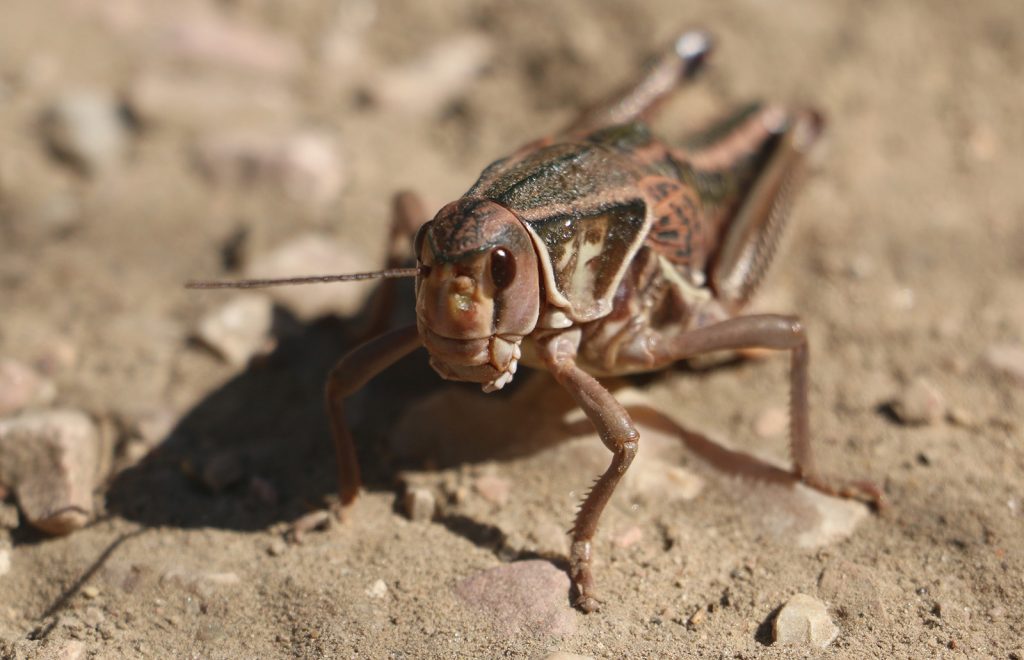
The Plains Lubber grasshopper and I watched each other for a long time. It did not appear frightened as I moved around it to get a better photograph. I didn’t notice until I got home that you can only see both its antennae in shadow. I happened to be at the right angle that one of them appears to be missing. This species has been frequently seen in western Nebraska this year, most likely due to the amount of rain we have received.
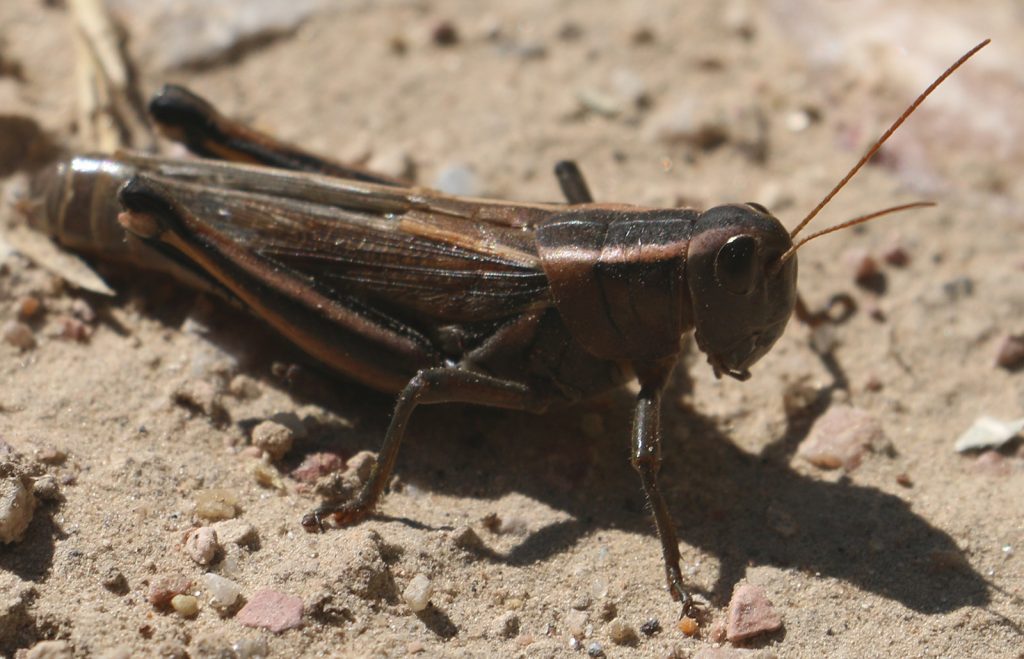
This much smaller grasshopper was nearby the Plains Lubber. It stopped briefly as I took a picture before hopping away into the tall grass.
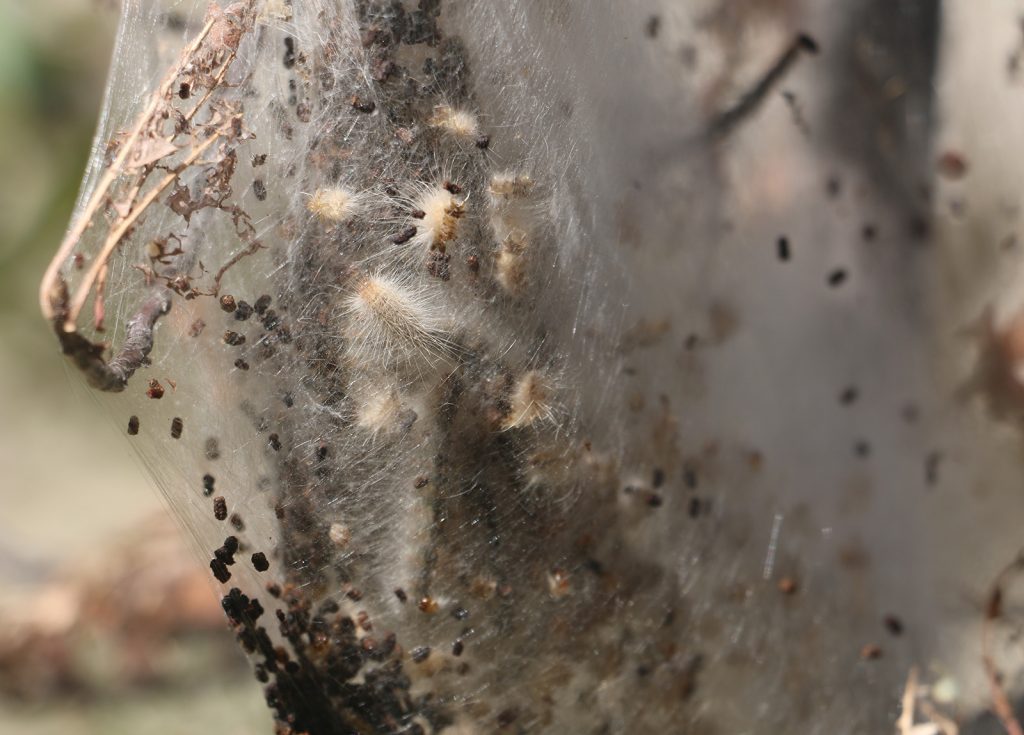
Though I was on a historical tour of the people and places in Sioux County, I found there is still life everywhere.
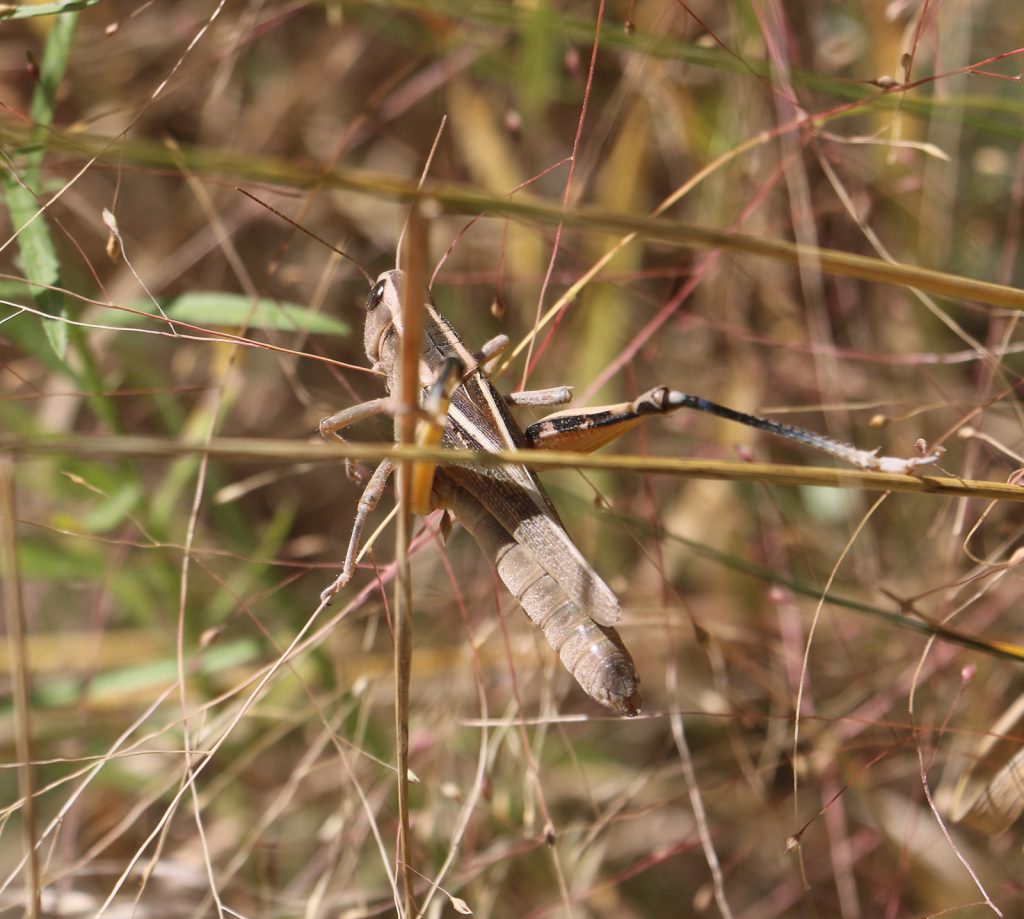
A cool breeze blew through the Belmont Tunnel, cooling off any larger animals, including Homo sapiens, who walked along the path leading to it. For a grasshopper, the breeze is a wind that makes it difficult to leap from place to place, forcing it to clutch onto pieces of grass to stabilize itself until the air is calm once again.
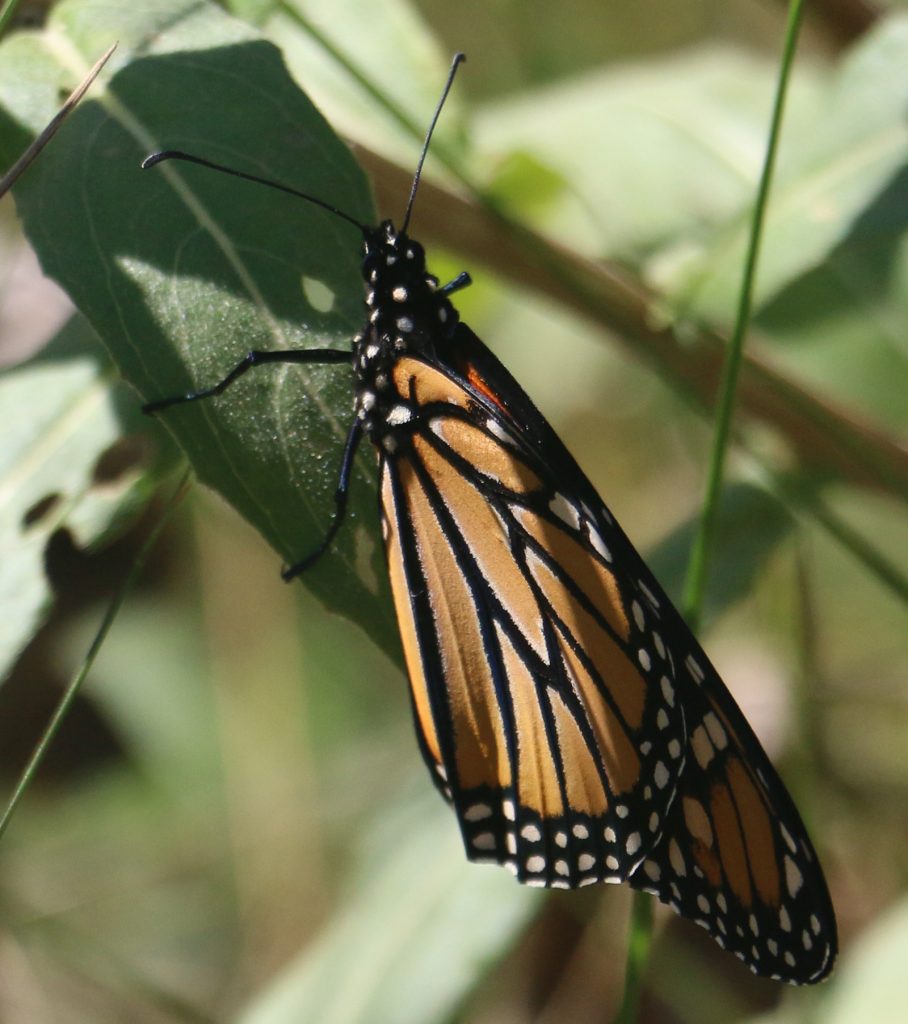
Every small creature found something to grab onto as the wind grew brisk along the path to the Belmont Tunnel.
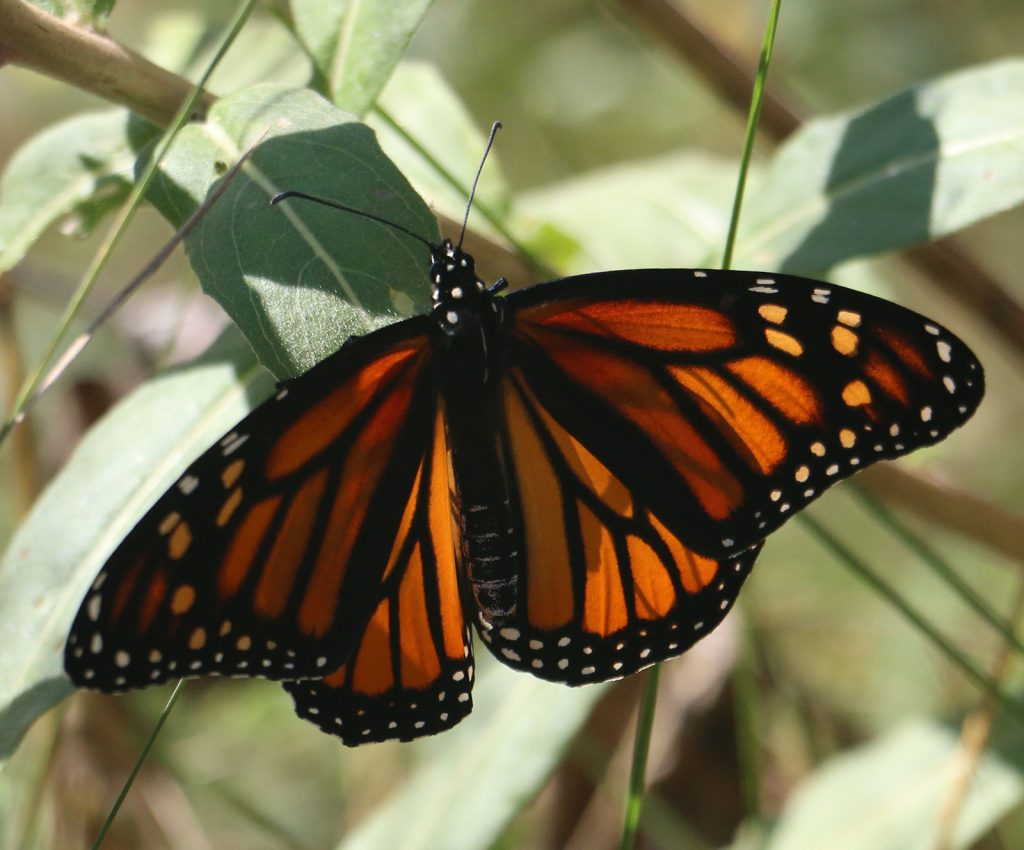
By shifting the placement of its wings and grasping onto leaves, butterflies can maintain their balance, even on a delicate leaf as it blows to and fro in the wind.
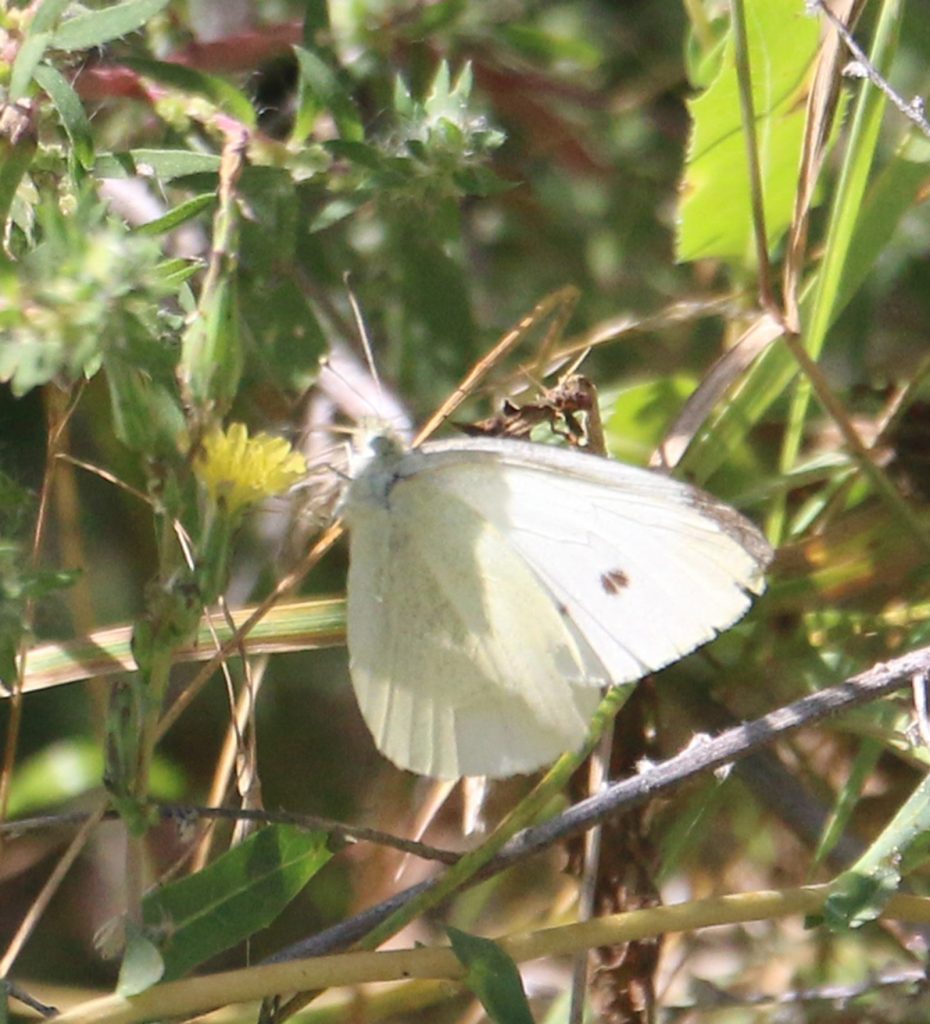
A small butterfly takes a moment to rest after chasing another butterfly around the tall grass near the Belmont Tunnel.
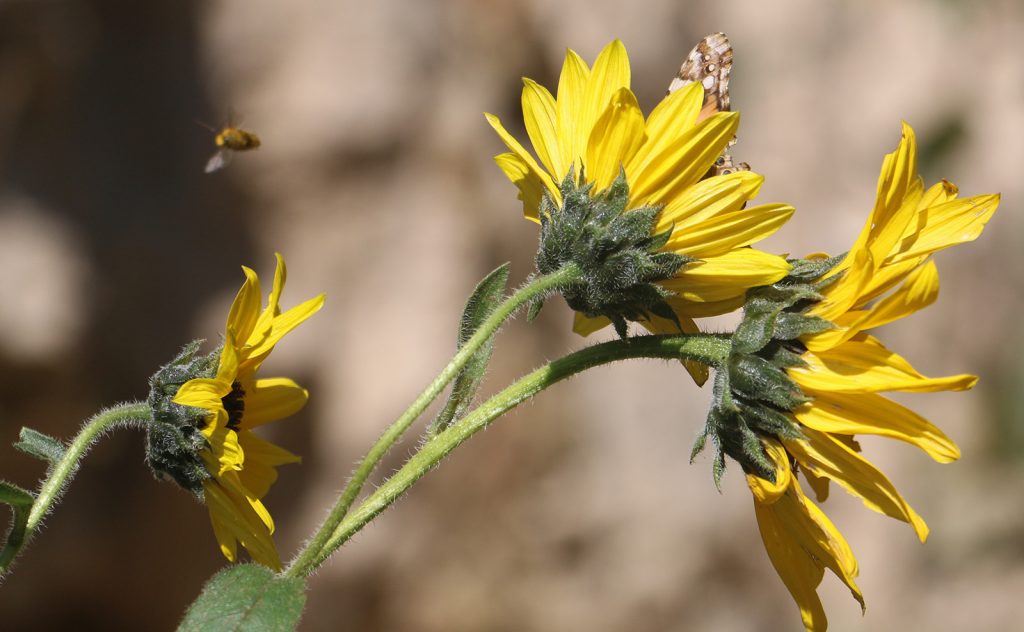
As I walked back toward our bus after visiting the Belmont Tunnel, I noticed something was different about these sunflowers swaying in the wind. I almost missed it, but it was there.
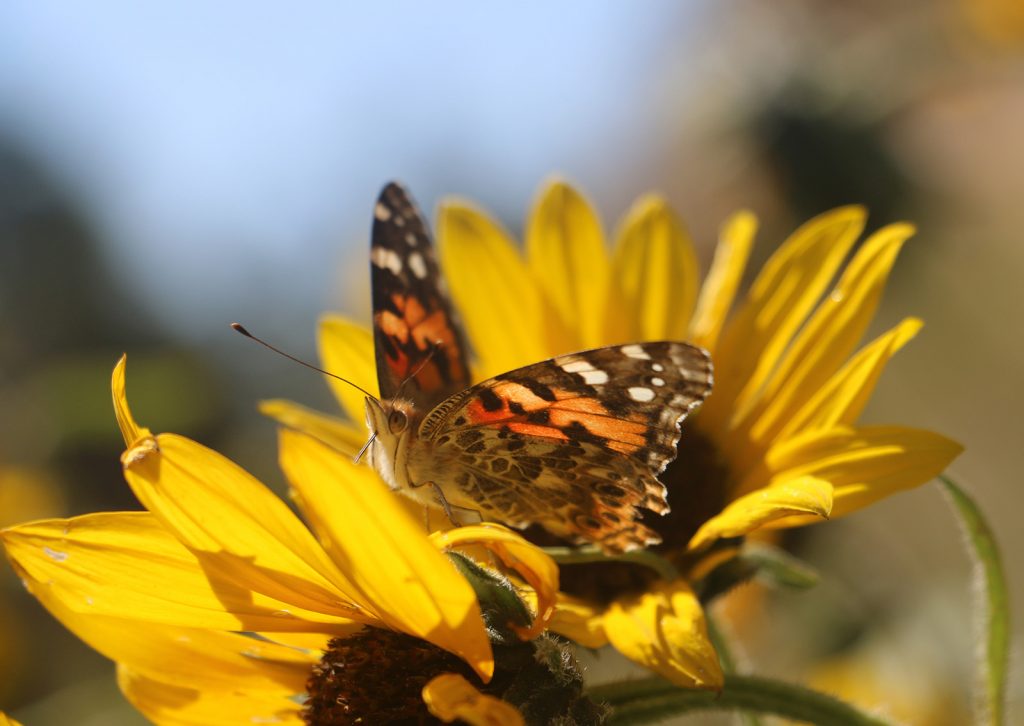
The wind had picked up from a gentle breeze to quickly moving air that blew my hair left and right. This butterfly desperately tried to hang onto a sunflower as the plant moved uncontrollably from side to side.
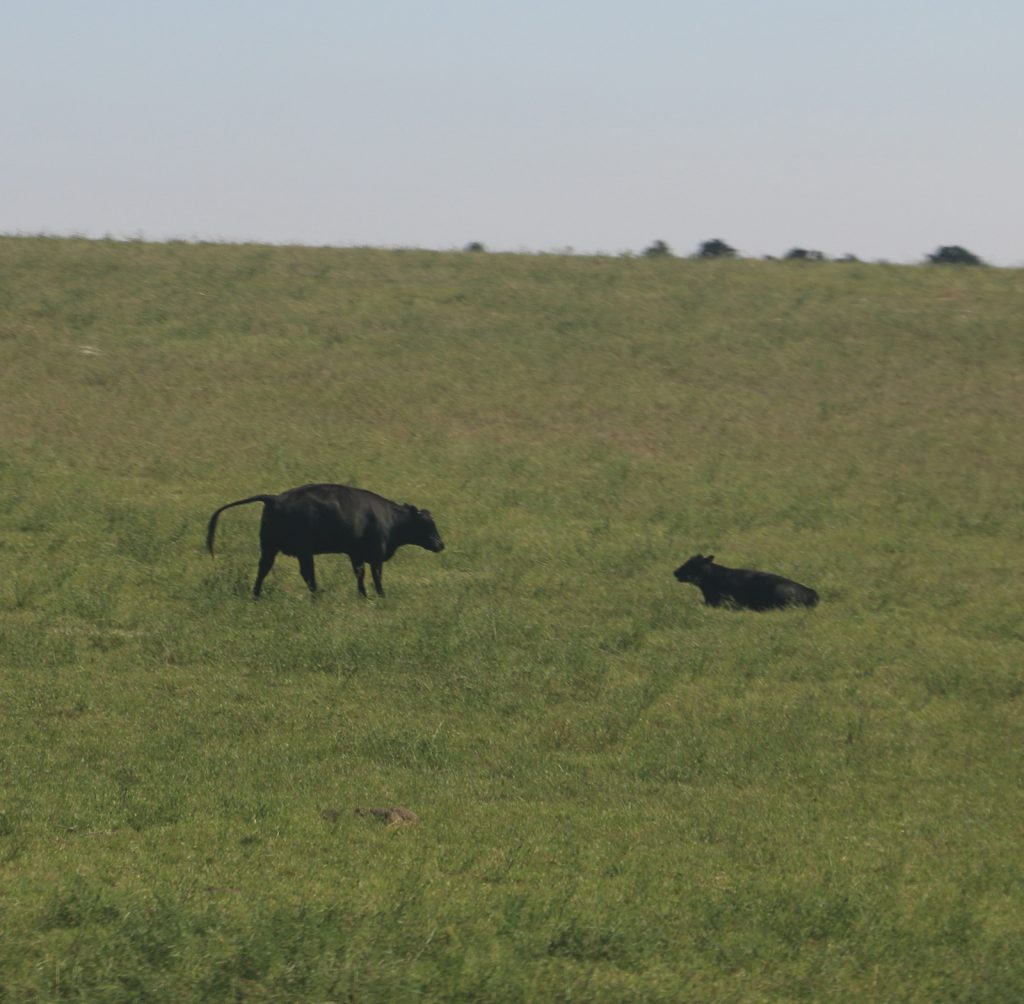
The cow on the left was pooping. This picture is a fail because I missed the important shot that would have proved my previous statement.
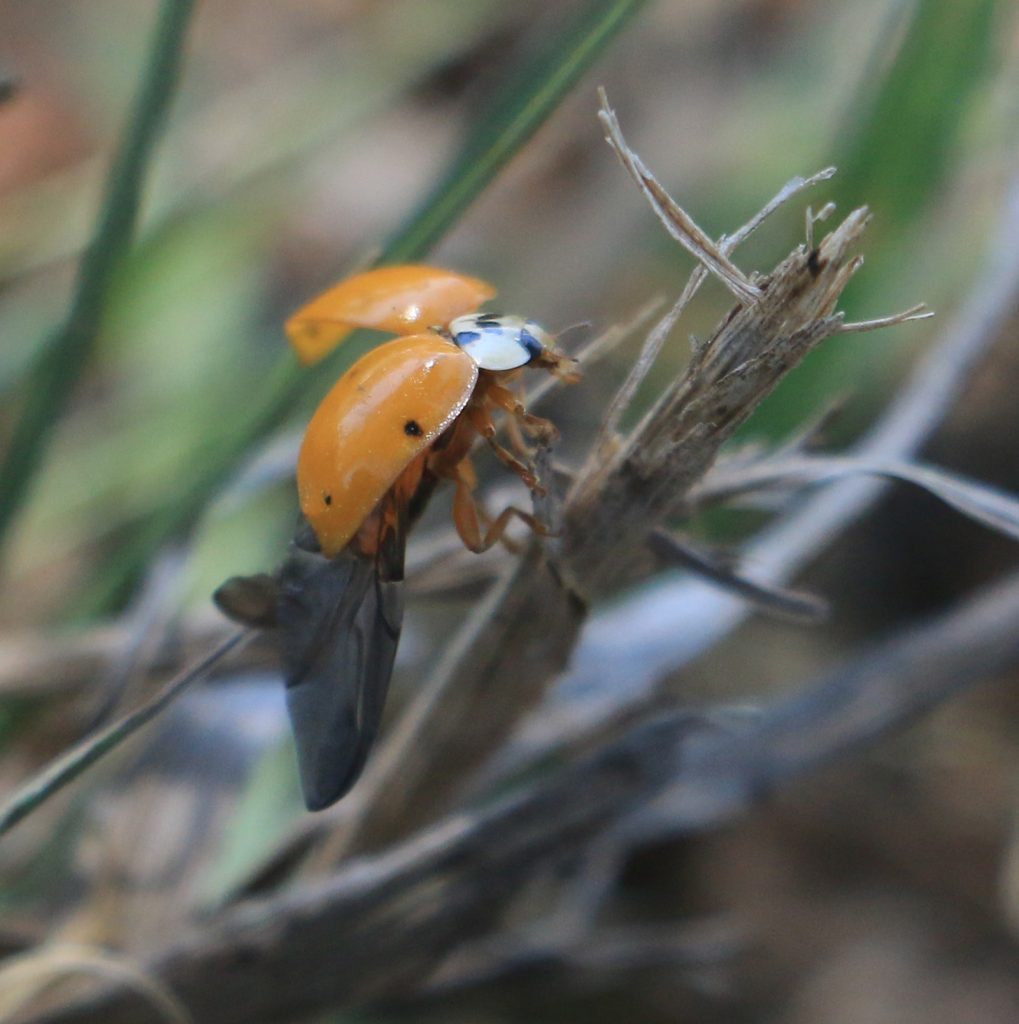
The Sioux County Historical tour stopped at the Box Butte Reservoir for lunch. While the rest of the group chose to eat on park benches, Paul and I picnicked on the ground. A ladybug landed on my hand. After I let it crawl around for a minute or two, I gently placed it on the grass. A few moments after, it did this.
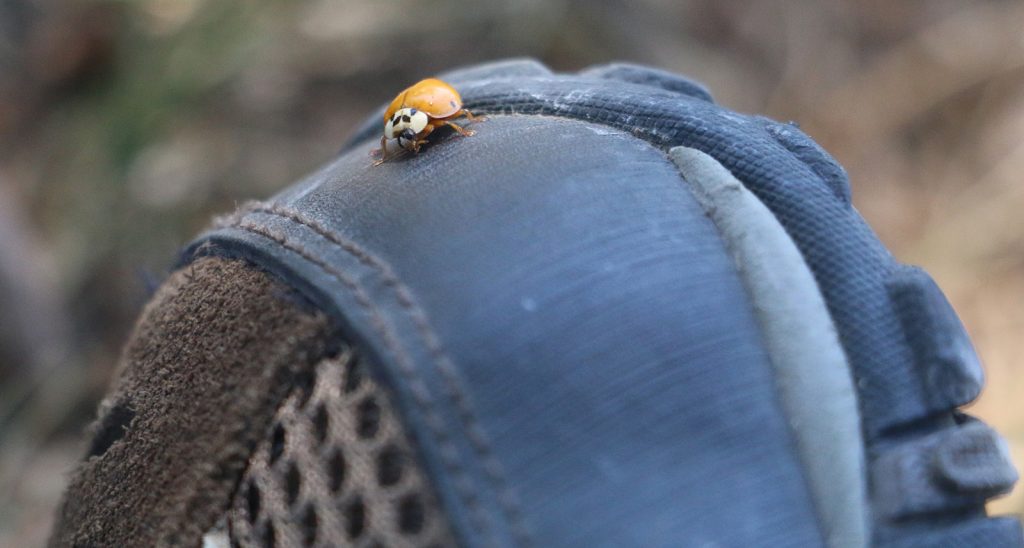
After crawling around on the ground for a while, the ladybug decided it really did like me, especially my shoe.
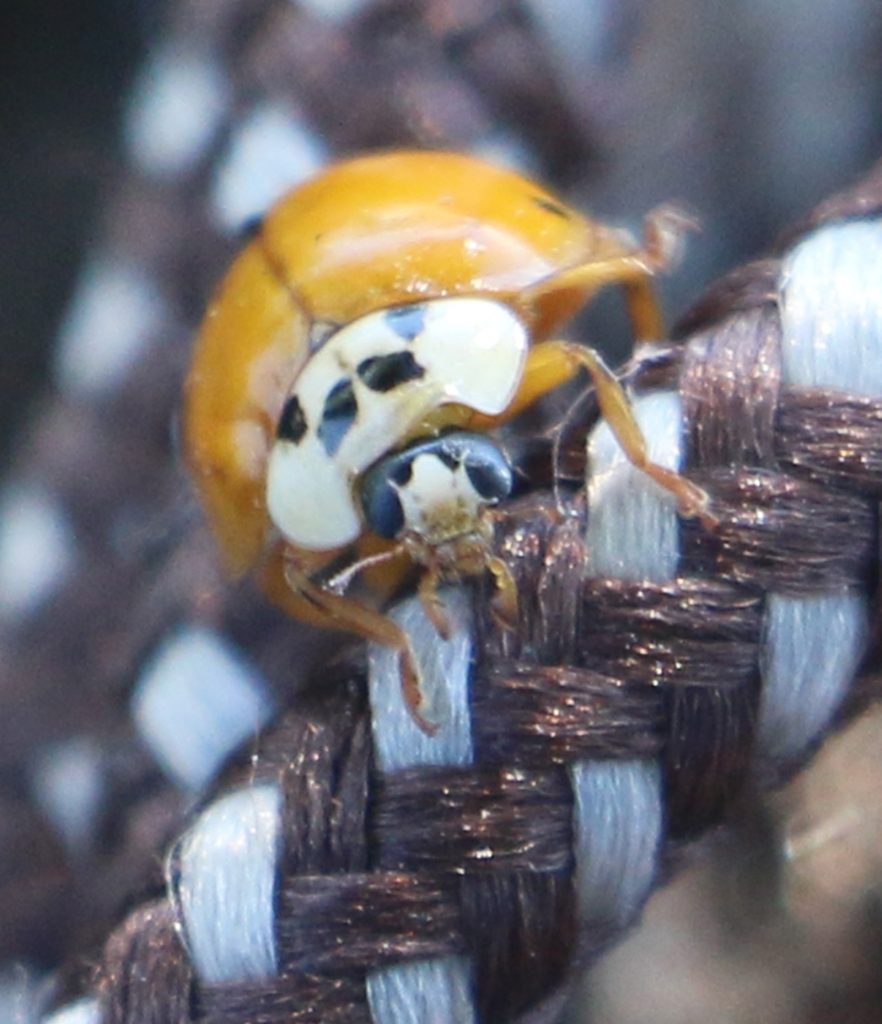
The ladybug loved my shoelaces. By the time it had crawled onto my jeans, I knew it would get hurt if I moved too much. So, I let it crawl into my hand again and I placed it back on the ground to go about its way.
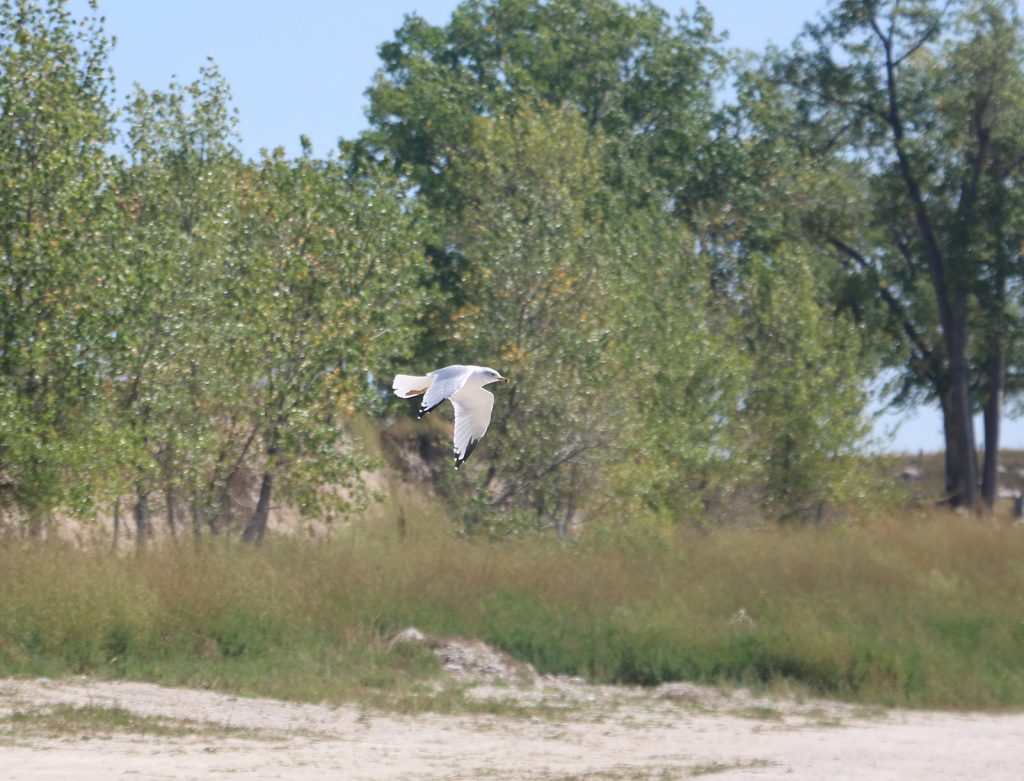
After lunch, I watched this bird stare into the water at the Box Butte Reservoir before sailing above the water. It then circled back over land and sped up here until it was once again above the water. The bird stretched out its wings, glided through the air, and curved with the wind current until I lost sight of it in the distant trees.
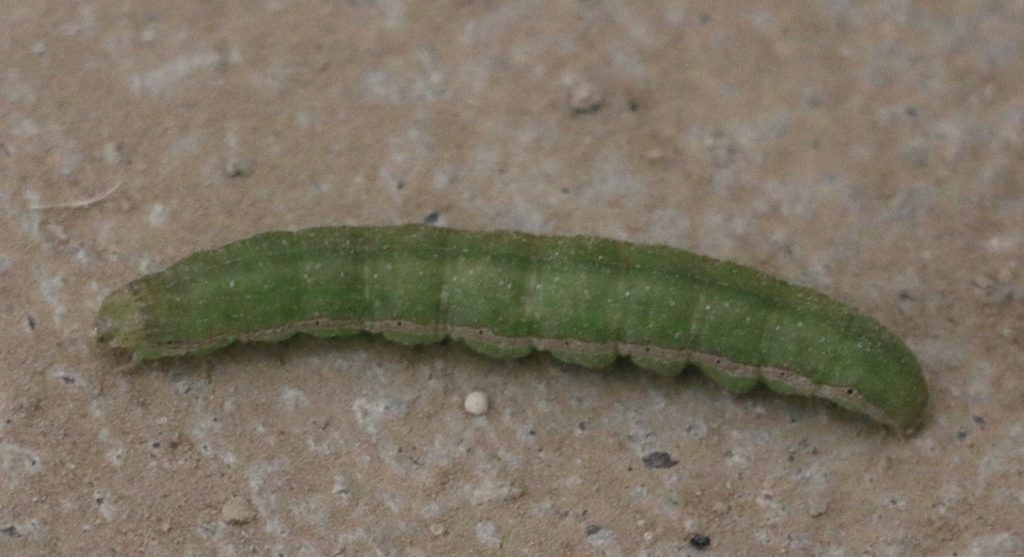
Stop in an semi-permanent toilet to pee, see a green caterpillar. You know, just another normal day for Irene.
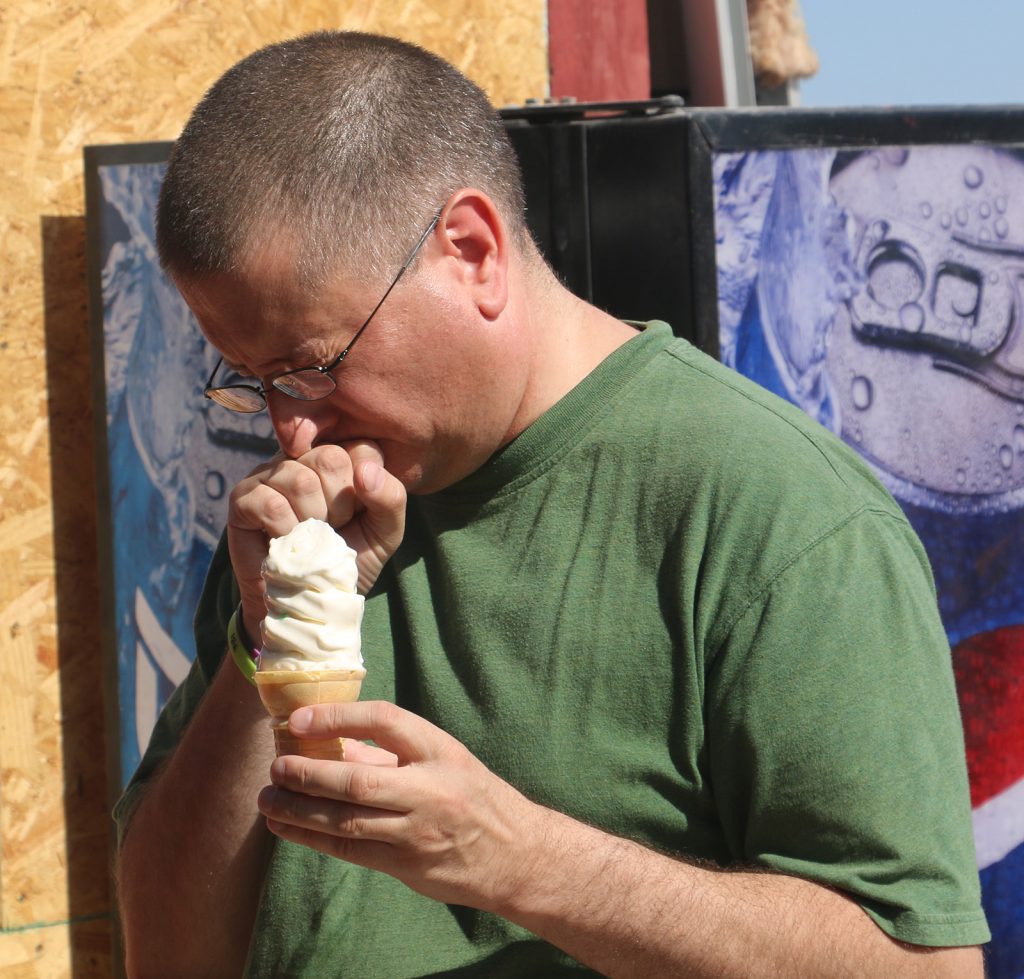
At the end of our Sioux County Historical tour, we stopped for ice cream in Crawford. Paul got brain freeze.
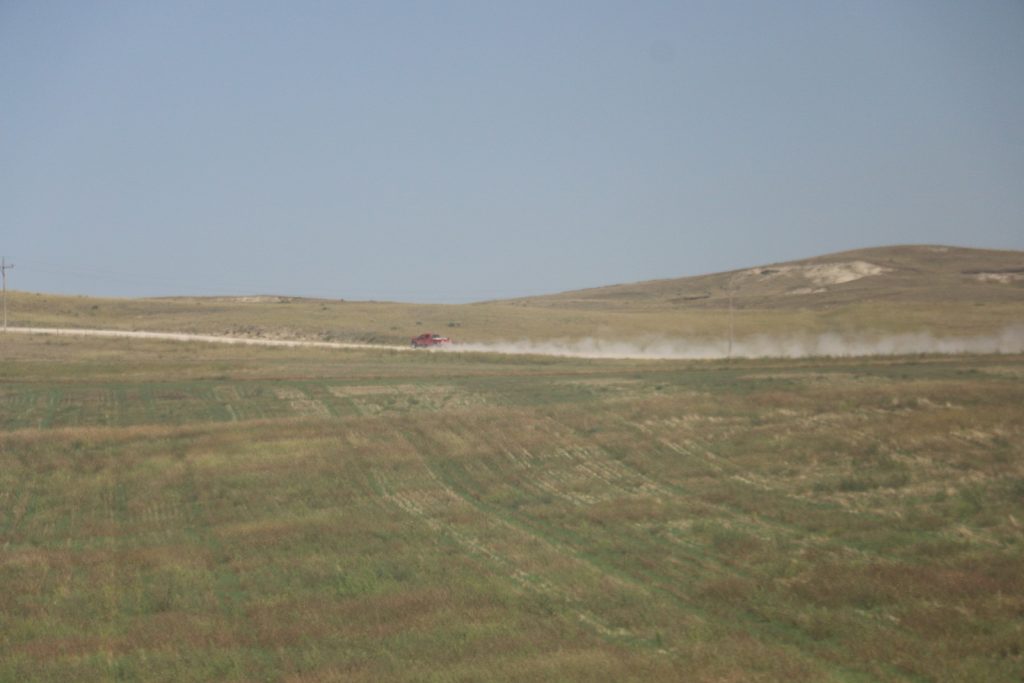
I learned many new things on the Sioux County Historical tour. There is a lot of information to process and I will write about it. What I already knew was that I can’t go anywhere without writing about it and I can’t help but see nature everywhere I go. For now, I need to keep on trucking. Until next time…
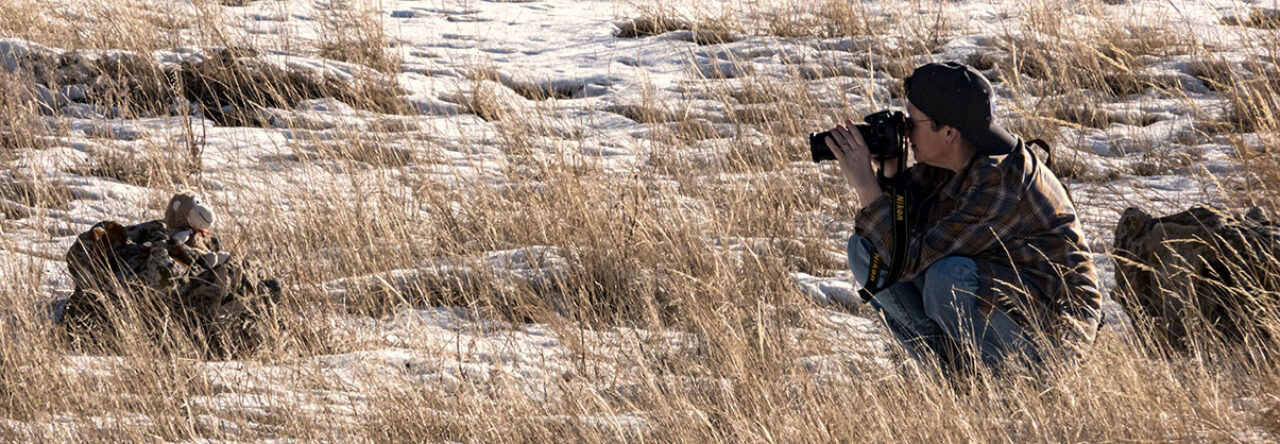
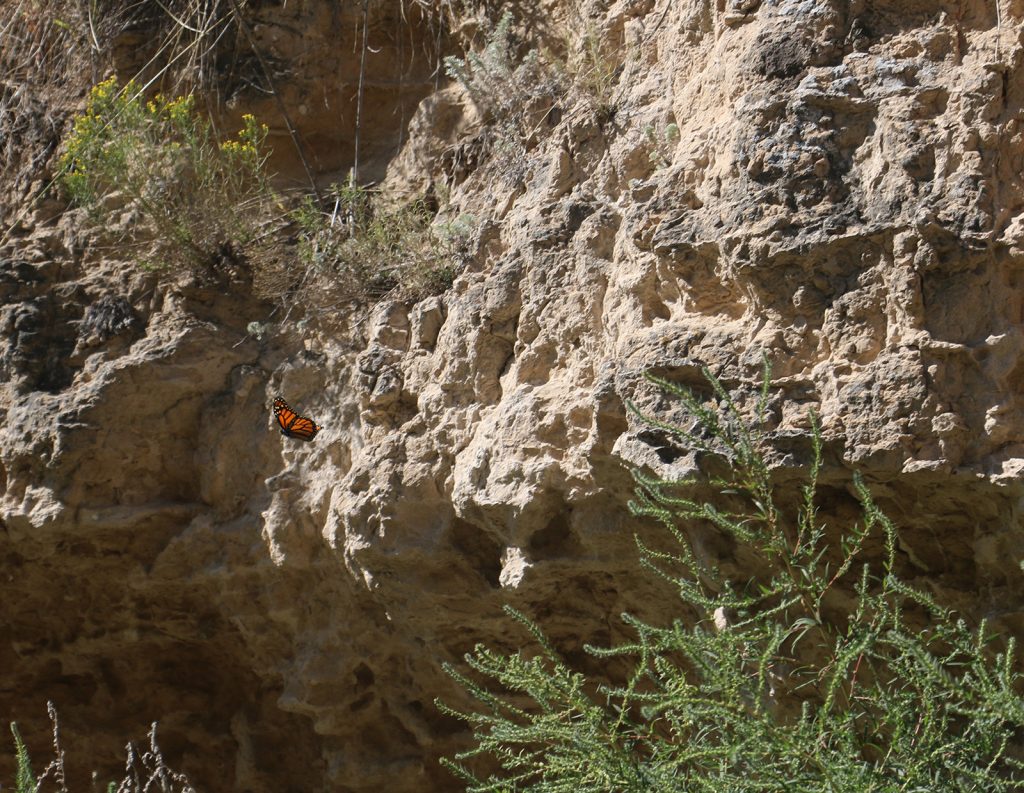
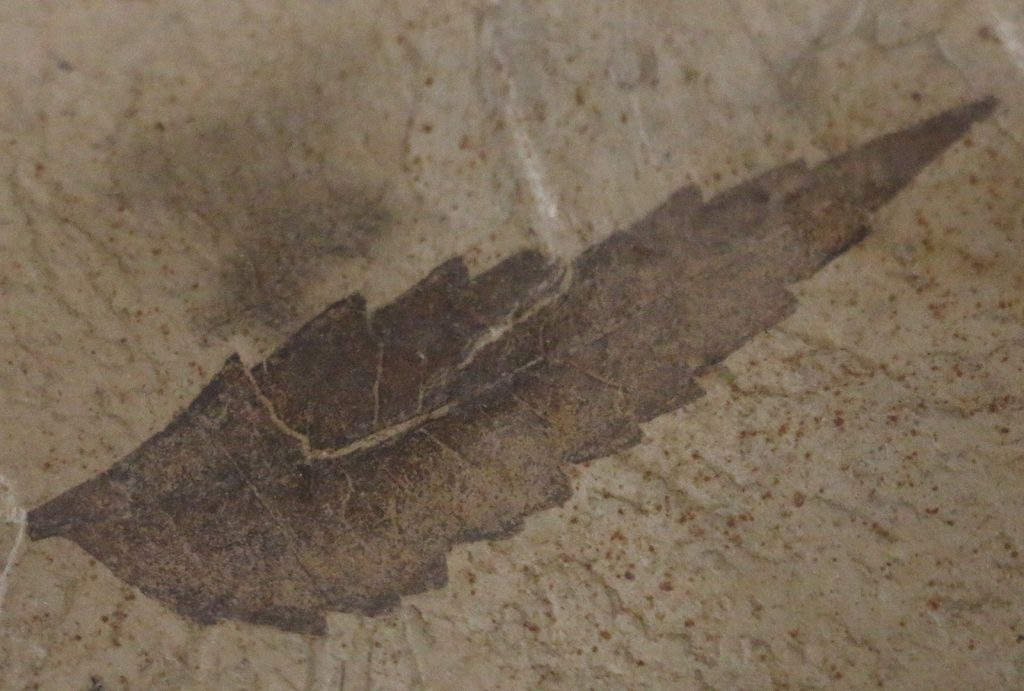
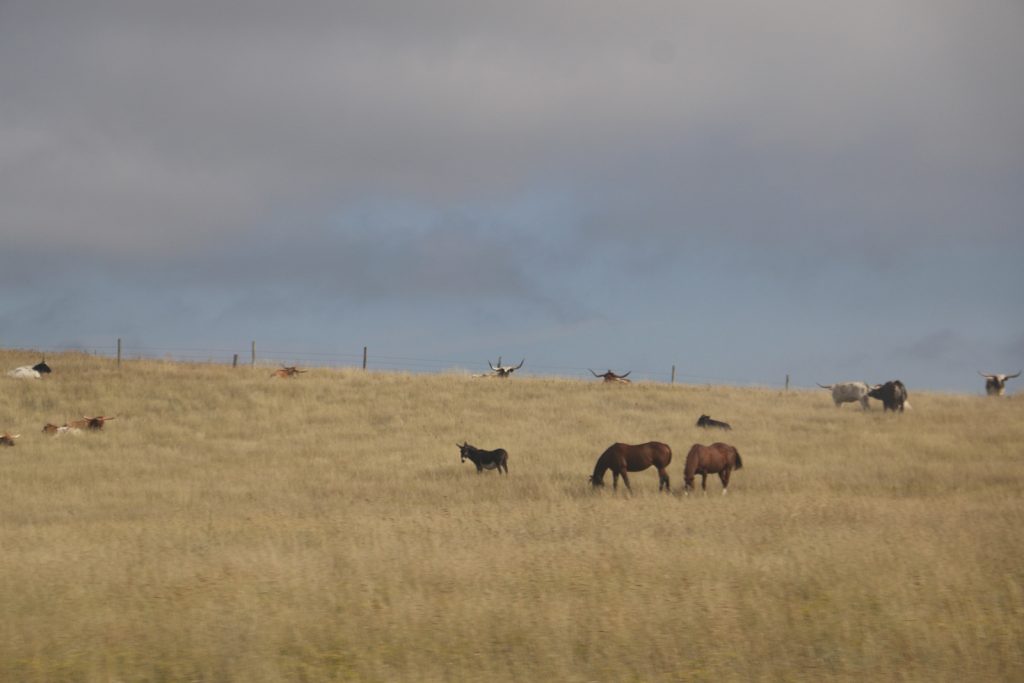
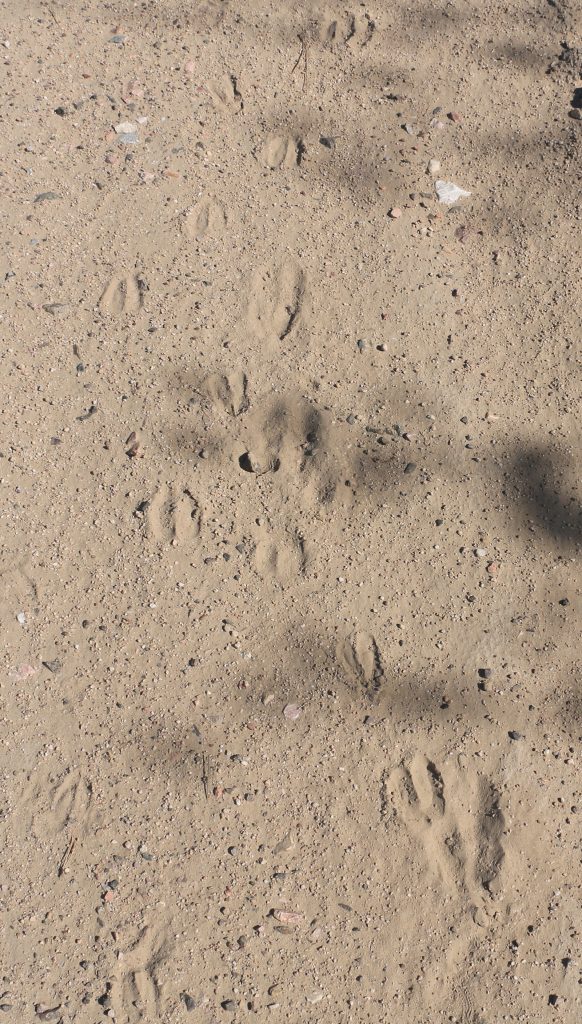
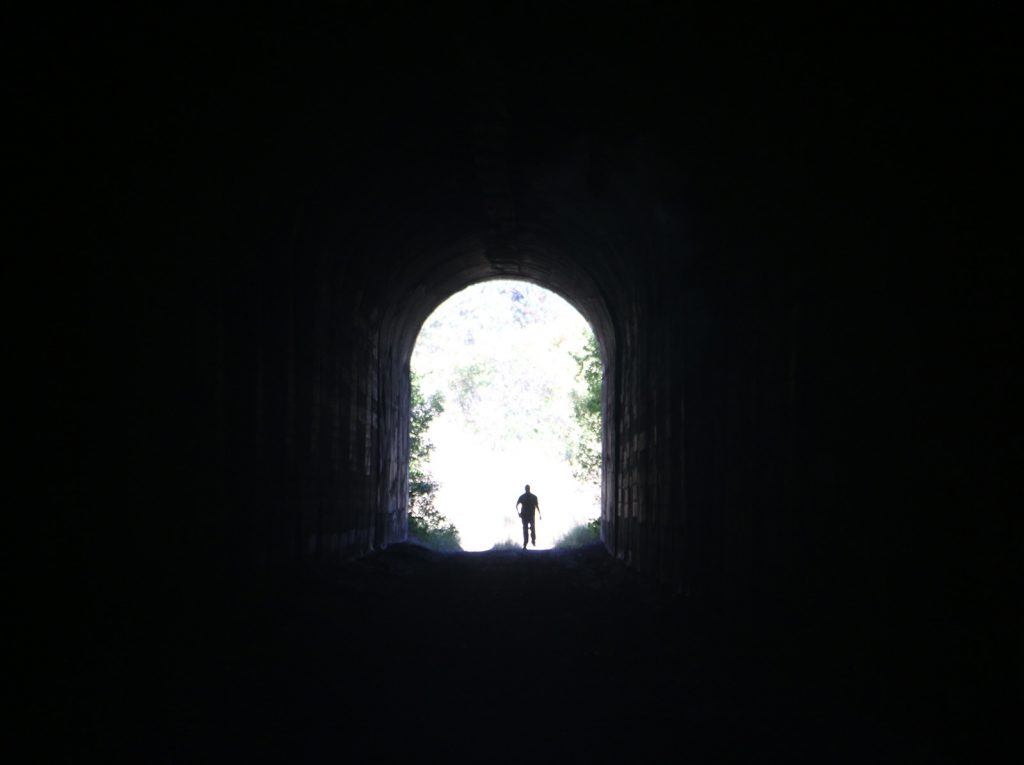
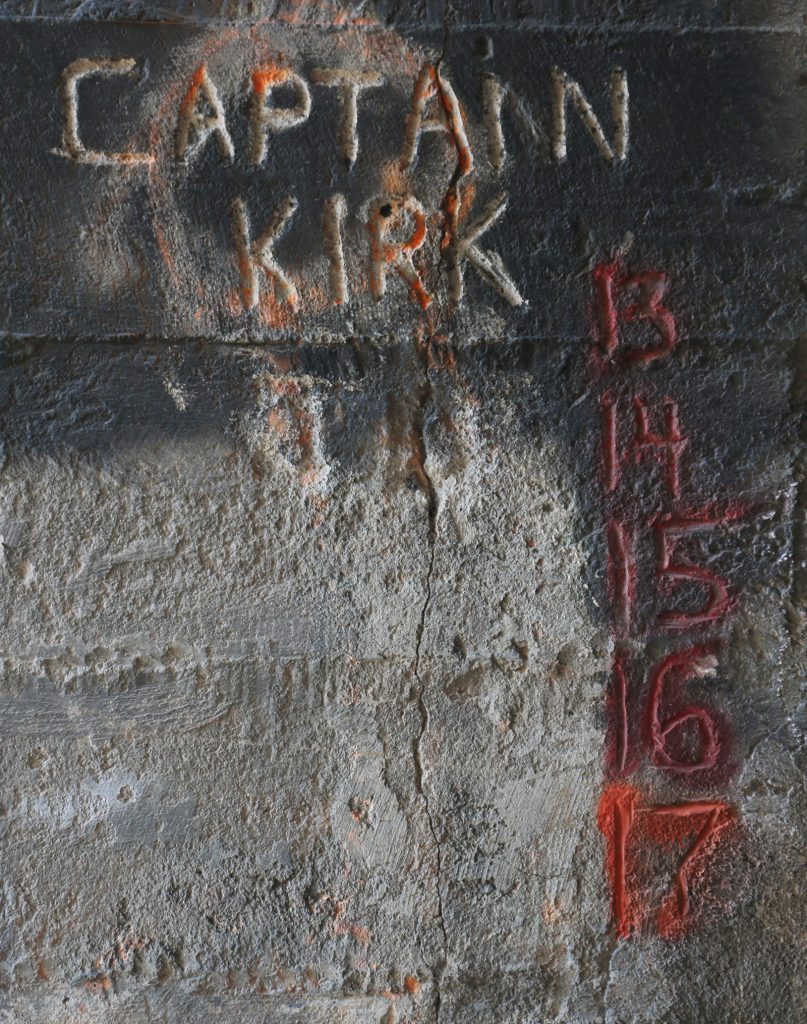
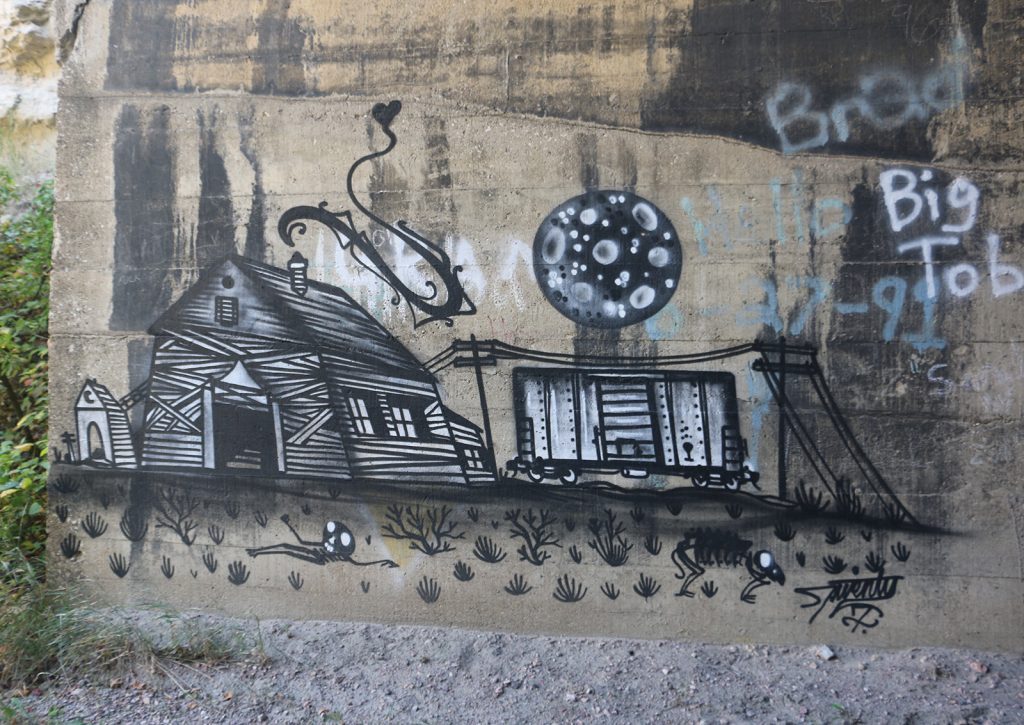
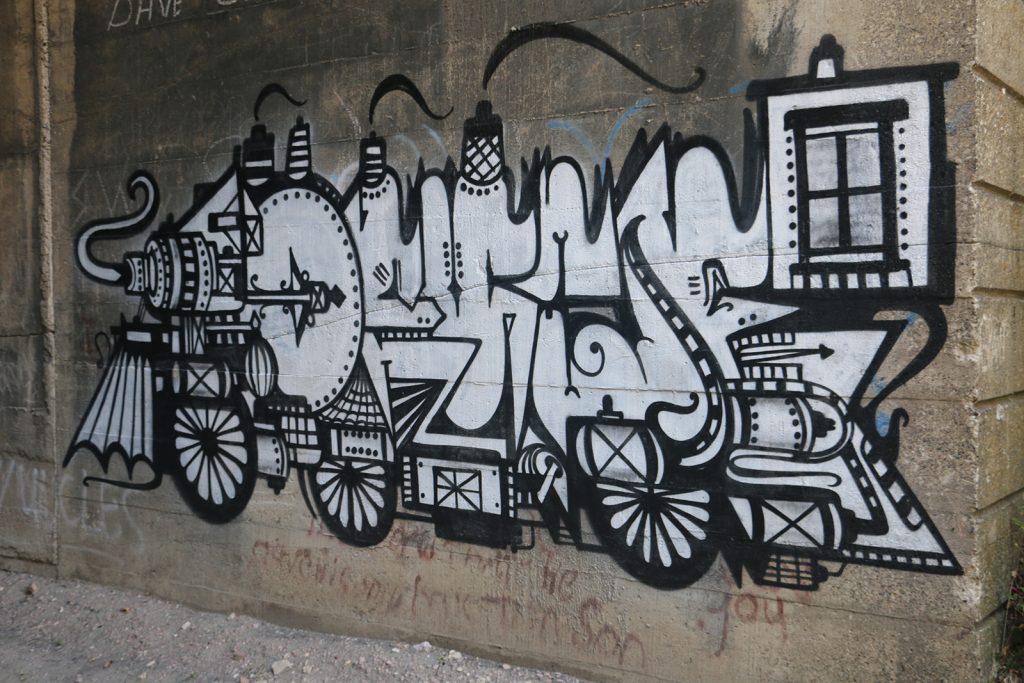
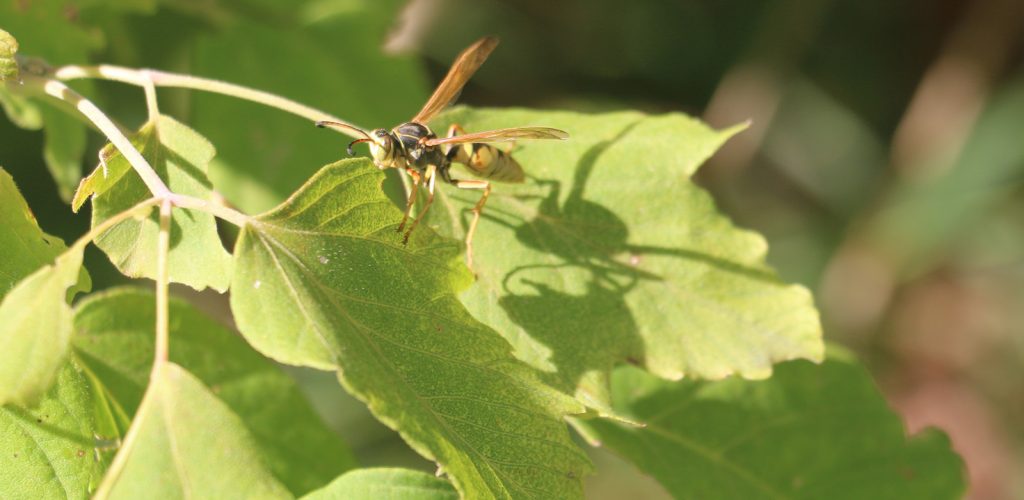
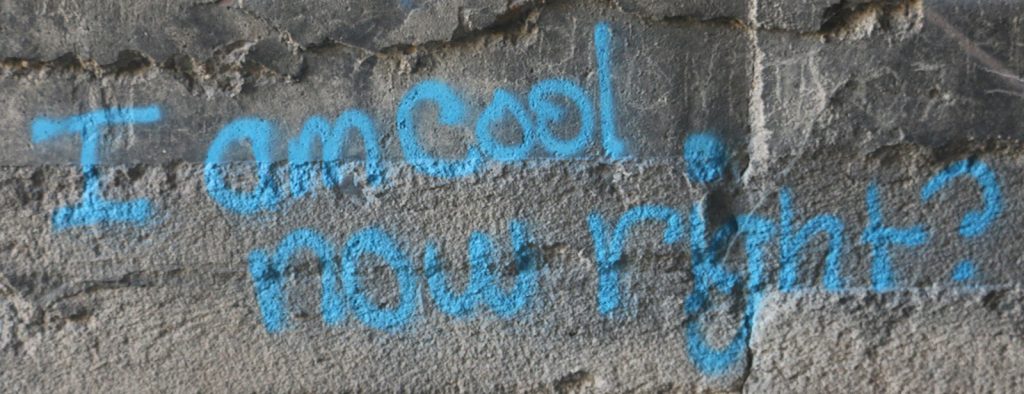
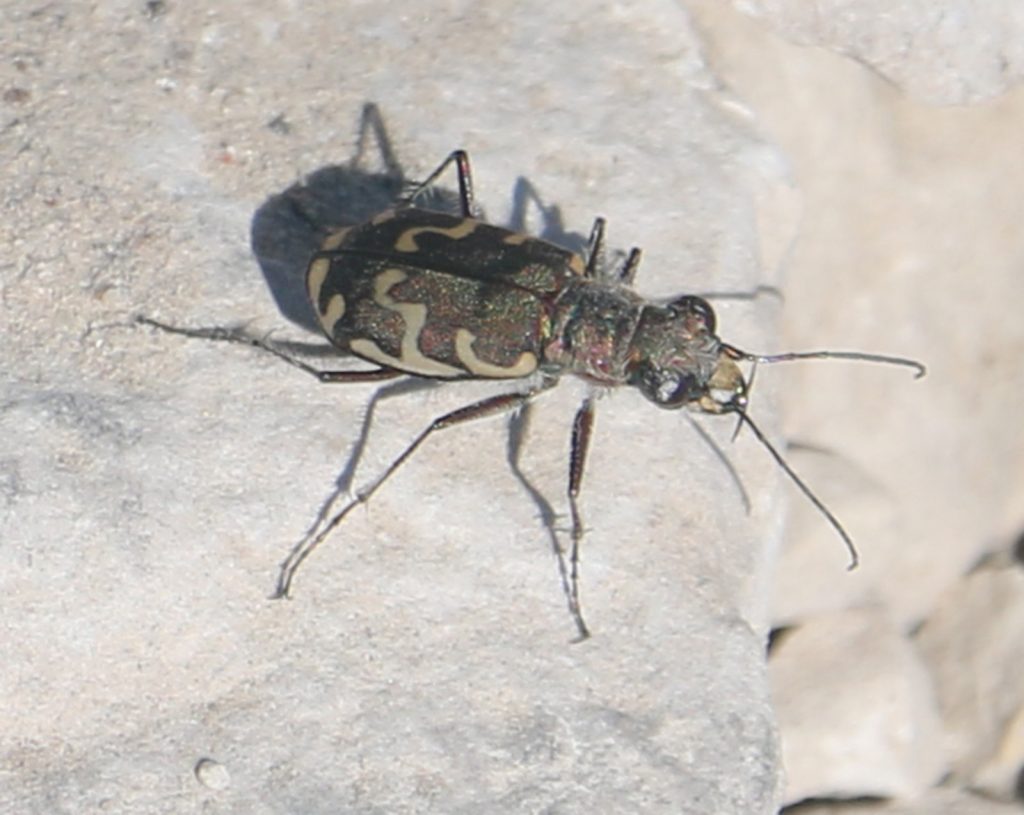
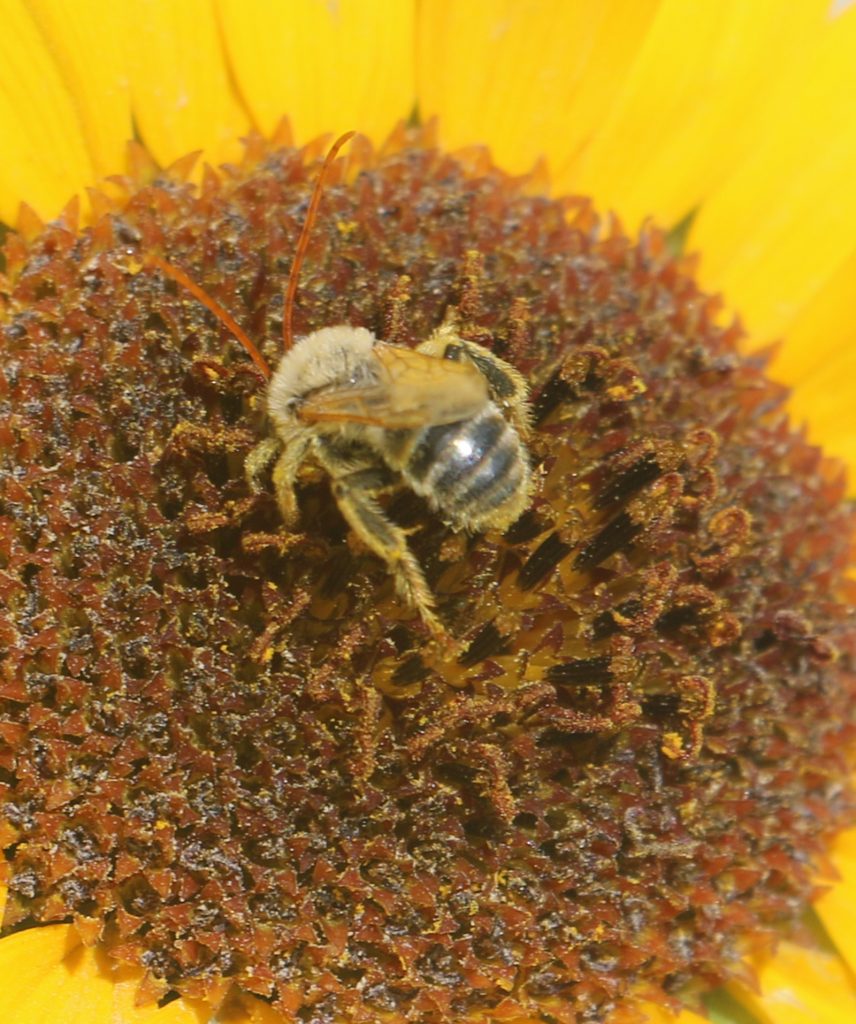

Leslie Jordan
Wonderful..my Mom.s family home steaded..just a few miles west of belmont…
I began grade school there in….well a Long time ago….1958…..love it up there……..excellent photos …thxs. Irene.
Irene
It is beautiful up there. You will have to tell me the story some time about your family history and what it was like.